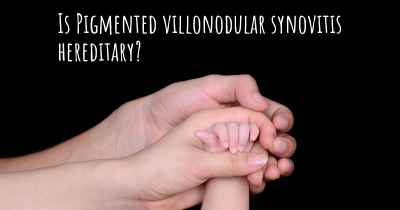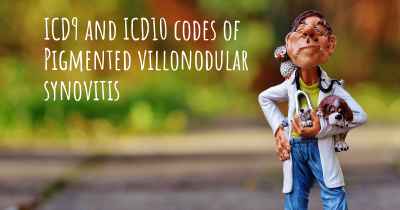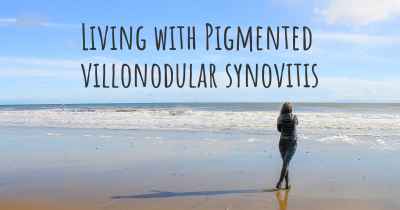What is the life expectancy of someone with Pigmented villonodular synovitis?
Life expectancy of people with Pigmented villonodular synovitis and recent progresses and researches in Pigmented villonodular synovitis

Pigmented villonodular synovitis (PVNS) is a rare benign condition that affects the synovial lining of joints, tendons, and bursae. The life expectancy of individuals with PVNS is generally not significantly affected by the condition itself. However, the prognosis can vary depending on the extent and location of the disease, as well as the response to treatment.
Treatment options for PVNS include surgical removal of the affected tissue, radiation therapy, and targeted drug therapy. Early diagnosis and intervention can help manage symptoms and prevent complications.
It is important for individuals with PVNS to work closely with their healthcare team to develop an appropriate treatment plan and monitor the condition regularly. With proper management, individuals with PVNS can lead fulfilling lives with a normal life expectancy.
Pigmented villonodular synovitis (PVNS) is a rare benign condition that affects the synovial lining of joints, tendon sheaths, and bursae. It is characterized by the overgrowth of the synovial tissue, leading to the formation of nodules or villi. PVNS can occur in any joint, but it most commonly affects the knee.
The prognosis and life expectancy of individuals with PVNS can vary depending on several factors, including the location and extent of the disease, the age of onset, and the presence of any associated complications. It is important to note that PVNS is generally considered a locally aggressive condition, meaning it can cause significant damage to the affected joint if left untreated.
Treatment options:
1. Surgery: The primary treatment for PVNS is surgical removal of the affected synovial tissue. The goal of surgery is to completely excise the abnormal tissue and preserve joint function. However, due to the infiltrative nature of PVNS, complete removal can be challenging, and recurrence rates can be relatively high.
2. Radiation therapy: In some cases, radiation therapy may be used as an adjunct to surgery to help reduce the risk of recurrence. This treatment modality involves the use of high-energy radiation to target and destroy any remaining abnormal cells after surgery.
3. Medical management: In cases where surgery is not feasible or when the disease is not causing significant symptoms, conservative management may be employed. This can include the use of nonsteroidal anti-inflammatory drugs (NSAIDs) to help alleviate pain and inflammation.
Prognosis:
The long-term prognosis for individuals with PVNS can be variable. Recurrence rates after surgical treatment range from 10% to 50%, depending on the location and extent of the disease. The risk of recurrence is higher in cases where complete excision of the abnormal tissue is not possible.
While PVNS is generally considered a benign condition, it can lead to significant joint damage if left untreated or if recurrence occurs. The disease can cause pain, swelling, stiffness, and limited range of motion in the affected joint. Over time, this can result in joint degeneration and the development of osteoarthritis.
The impact of PVNS on life expectancy is difficult to determine as it primarily affects joint function rather than overall systemic health. However, if left untreated and allowed to progress, PVNS can significantly impair quality of life and mobility.
Conclusion:
Pigmented villonodular synovitis is a rare condition characterized by the overgrowth of synovial tissue in joints, tendon sheaths, and bursae. The prognosis for individuals with PVNS can vary depending on the extent of the disease, the success of surgical treatment, and the presence of any complications. While PVNS is generally considered benign, it can cause significant joint damage and impair quality of life if left untreated or if recurrence occurs. Early diagnosis and appropriate management are crucial in minimizing the impact of PVNS on joint function and overall well-being.








